The Veterans Day observance at California State University, Dominguez Hills (CSUDH) was marked by a week of events to thank and honor all military veterans among the students, alumni, faculty, and staff on the campus. President Mildred García greeted student veterans at an invitation-only luncheon on Tuesday, Nov. 8 in the Loker Student Union. On Nov. 9, a “show-and-tell” exhibit of military equipment was presented by the CSUDH Veterans Alliance, a student-run organization. Following that event was a talk and video presentation of “Fighting for Our Democracy” in the Multicultural Center (MCC), which highlighted the contributions of the 332nd Fighter Group (Tuskegee Airmen), the Kiowa Black-Leg Warriors Society, the Navajo Code Talkers, and the 442nd Regimental Combat Team (Go for Broke). Finally, an inaugural flag ceremony and exhibitions by the Veterans Alliance, the CSUDH ROTC cadre, and the National Guard rounded out the celebration on Nov. 10.
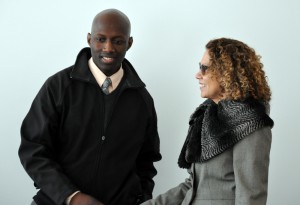
Lui Amador, a Marine Corps veteran, oversees Veteran Student Programs (VSP) and the Multicultural Center on campus. He said that Veterans Week, which was co-sponsored by the Office of Student Life, was “a way to provide more awareness of our student [veteran] population and give the general campus an opportunity to connect and learn about who our veterans are, what they’ve been through, and what it means for them to be back in school.”
Charles Palmer is a senior majoring in public administration/criminal justice. He shared his Army experiences – and his armor and 30-pound backpack – with students on the East Walkway.
“We brainstormed on how [Veterans Alliance] could get them to interact with our table, so we decided to bring out some of the equipment that we had through our tours of service and let them try it out,” he said.
Palmer, who served four tours of duty – three in Iraq – volunteered at the initial build-up of the war, with the desire to utilize his skills as a communications electronics technician. Having joined the Army initially to pay for his college education, the Paramount High School graduate retired in 2005 as a sergeant, with the intention to devote himself to his studies.
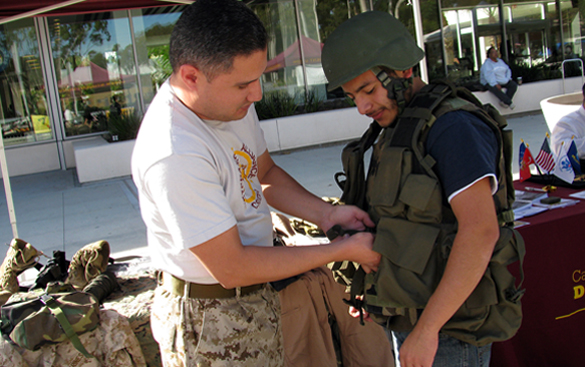
“Life got busy, especially after Sept. 11,” said Palmer. “I managed to get two courses done my entire nine years in the military. I attempted many times to go to school, but every time I’d sign up I’d have to [withdraw enrollment] because I was being sent somewhere for training or being deployed to war.
“I left the military because it just didn’t seem like I was going to accomplish a degree while in the military. I miss it, but [college] is an important life goal.”
Omar Toledo, a senior majoring in anthropology, left the Marines in 2004 as a corporal and earned his associate of arts degree from El Camino Community College before transferring to CSU Dominguez Hills. The Miami native says his experiences significantly impacted his choice of a major in college.
“When I was in Kuwait, there was a population of what we called third-party foreign nationals who provided certain services for the camps such as taking out the garbage, cleaning the showers, the menial tasks that really have a damaging effect on morale,” he said. “Each platoon had its turn to guard the foreign nationals and they would send representatives from each platoon. In my case, it was just myself, so I had this opportunity to interact on a very personal basis with people I had absolutely nothing in common with. There were people from India, Thailand, Pakistan, the Philippines, who had nothing in common with each other, other than wanting a paycheck to send back home to support their families. Talking with them and sharing their experiences, getting to where we all were, and sharing their food and their stories, was something that affected me deeply.”
Toledo served one tour in Iraq in 2003 for six months.
“The Marines have shorter tours, but, you could argue, more intense tours,” he said. “It was near the beginning, it was a much different war. The insurgency had not begun in earnest. When I was there, we were still looking for people in uniforms. It was near the end of my deployment that they started giving us warnings about [insurgents] not wearing uniforms. That’s when the war changed.”
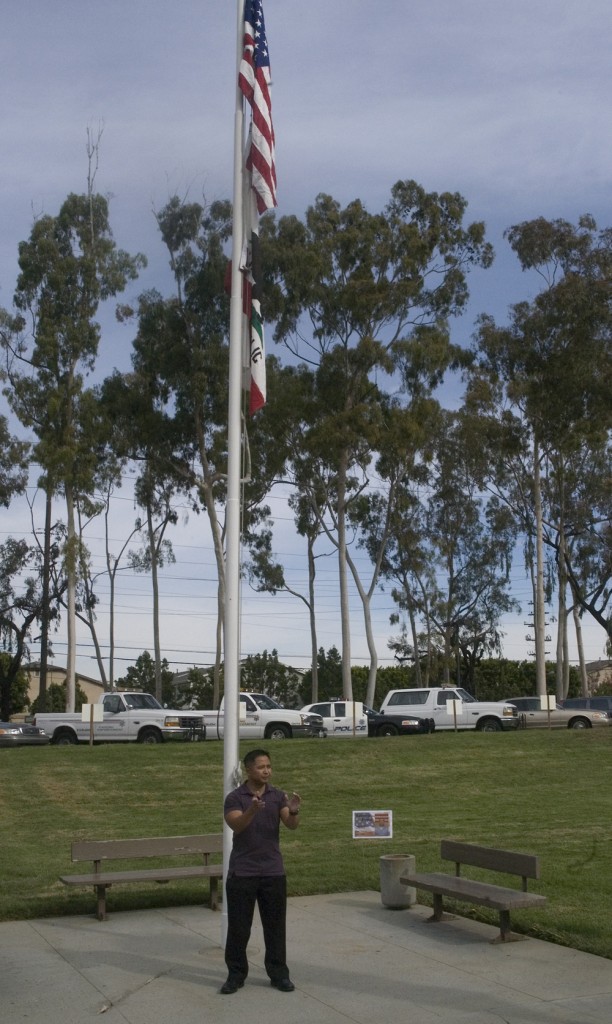
The Multicultural Center’s event, “Fighting for Our Democracy,” outlined the stories of Americans who, although exploited by the government due to their ancestry, were committed to their nation enough to put their lives on the line during World War II. Susan Nakaoka, director of fieldwork and admissions in the Master’s of Social Work Program, told students about the Japanese American 442nd Regimental Combat Team, the most decorated unit in the history of the U.S. military. Ben Wolf, a liberal studies student, is a descendant of Kiowa chiefs. The father of an Iraqi veteran, he spoke on the Native American warrior tradition of the Kiowa Black-Leg Warriors Society and the Navajo Code Talkers of World War II. Amador noted that the history of Americans who defend the United States despite barriers of racism was “a little ironic and sad that we have to honor and celebrate in this way. It’s kind of a bittersweet thing to acknowledge the sacrifices that they made and how great that was, but at really extreme cost to them, to their people, to the memory of who they are, just all of it.”
“[There are] significant moments in our military history where people sacrificed so much, all in the face of trying to prove loyalty, prove their commitment and their devotion, to a nation that wasn’t really giving them much more in return.
“[The Japanese] were being incarcerated, and then they’re being asked to put up or shut up – prove their worth by joining the military or go to prison and stay in the camps. You have Native Americans, time and time again, were asked to sign treaties and are having the treaties broken, who have a significant lineage toward a warrior culture. And when they go up to enlist and utilize their services, they basically get exploited in their efforts. You have the Filipino veterans of World War II, who to this day, still haven’t gotten their acknowledgment or benefits, and are basically… the government is waiting for them to die out so they don’t have to pay out. All of these groups – it took years, decades, for them to get any acknowledgment, any kind of record in the history books.”
Gina Delahoussaye, a senior majoring in Africana studies, presents programming at the MCC. She said that she was surprised at what she learned about the diversity within American military history.
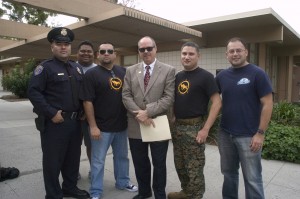
”Before this event, I didn’t really know who [these groups] were,” she said. “This was a learning experience for me too, I took it as a way of broadening my horizons.
“Their stories were really similar to each other. They were all oppressed in some way but still found the courage and the bravery to step up and fight for a country… that they all felt they had ties to.”
Ron Bergmann, associate vice president of information technology and chief information officer, delivered the keynote address at the inaugural Flag Ceremony on Nov. 10. After 20 years in the Army in assignments throughout the world, he retired as a 1st Sgt Communications Electronics Chief and is decorated with a Bronze Star. He shared stories of veterans’ bravery throughout history and the continuing sacrifices of military families today.
“There are many, many more stories to tell, far too many for me to mention today,” he said. “But they are what set our nation’s veterans and their families apart from all others.
“For many veterans, our nation was important enough to endure long separations from their families, miss the births of their children, freeze in sub-zero temperatures, bake in wild jungles, lose limbs, and far too often, lose their lives. Military spouses have had to endure career interruptions, frequent changes of address, and a disproportionate share of parental responsibilities. And the children often have to endure changes of schools, separation from friends, and hardest of all, the uncertainty that Mom or Dad may not live through the next combat tour.”
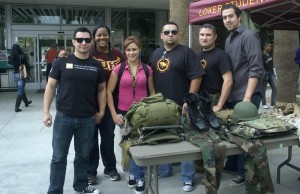
Bergmann related his own story of returning home to the anti-war climate during the Vietnam War and his gratitude for the nation’s appreciation for the veterans of today.
“I know a veteran who… was called to duty at the height of the Vietnam War,” he said. “For all his time there, all he could dream of was coming home. Finally, the day came for this veteran to [go] home. Upon landing, he kissed the ground and double-timed to the nearest Greyhound bus that would take him to the airport and home.
“As he arrived in San Francisco Airport, instead of being greeted with cheers and [thanks], he was greeted with jeers, spit upon, and called names. What a disappointment, and what a shame that caused him to quickly purchase a shirt and pants, and stuff his uniform into a trashcan in the airport bathroom. I know that veteran has forgiven his country… because that veteran was me. I am so grateful that our nation has changed from those dark days and regardless of political persuasion, people are welcoming our veterans home and thanking them for their service. These young men and women are freedom fighters and are making huge sacrifices for us. They deserve a ‘thank you,’ and so much more.”